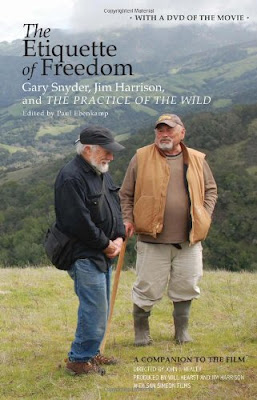
There's an amazing variety of gift books available this holiday season, ranging from the art of illustration by Lynd Ward (in a handsome two-volume set by the Library of America) to a long-overdue biography of that literary chameleon, Terry Southern. All of these previously-reviewed suggestions are available here on BellemeadeBooks through the Amazon search box, and there's still time to get these books to read them yourself before wrapping!
Above: This fond memory is by artist Art Spiegelman is excerpted from his introduction to Lynd Ward: Six Novels in Woodcuts, a two-volume set published by The Library of America on October 14, 2010. "... It seems natural now to think of Lynd Ward as one of America’s most distinguished and accomplished graphic novelists. He is, in fact, one of only a small handful of artists anywhere who ever made a “graphic novel” until the day before yesterday. The ungainly neologism seems to have stuck since Will Eisner, creator of the voraciously inventive Spiritcomic book of the 1940s, first used it on the cover of a 1978 collection of his seriously intended comics stories for adults, A Contract With God. It was a way to distance himself from the popular prejudices against the medium, and he often cited Ward’s 1930s woodcut novels as an inspiration for his work and forthe euphemism. But Ward’s roots were not in comics, though his work is part of the same large family tree, belonging somewhere among the less worm-ridden branches of printmaking and illustration."

Jim Harrison and Gary Snyder join together in a new book of conversations and an accompanying documentary, The Etiquette of Freedom, in which the two discuss ideas of poetry, art, and God (and, occasionally, Google) while trekking the California wilderness. The largely untouched wild makes a beautiful case for leaving well enough alone, but both men realize that man's imprint continues to shape the land and that one's own conscious attitude is a necessary tool of conservation.Both writers are acutely aware that even in an age when global economies are seen as increasingly contracting, the world's energy consumption continues to explode with an unstoppable demand for new resources. The political aspects inherent in twenty-first century stewardship of the land, however, are not the focus here. These talks are a give-and-take primarily on the individual's role in developing a stewardship of place and a larger sense of belonging through awareness.

Bowler hats, tommy guns, and spats: illustrator Seymour Chwast's updated Dante's Divine Comedy: A Graphic Adaptation looks like a 1930s Hollywood detective movie, telegraphing Dante's ultimately hopeful message in cinematic black-and-white. If Chwast's version of theDivine Comedy begs no comparison to the art of illustrator Gustave Doré, well, it's a safe bet the 19th century engraver never imagined Dante as a Dashiell Hammett character, either. Chwast's first graphic novel is full of innovative and clever images, although high-school Miss Grundys may wail at the simplified story. "Captain" Charon's lake is now a neon-lit chasm he zooms across in a speedboat and floozies of Florence lounge in cocktail dresses. The damned wear Yale varsity sweaters. Dante still searches for the truth with the poet Virgil, now as his guide in a tuxedo and bowler.Some things, however, stay true to the original: for most readers, as well as the artists that have illustrated the Comedy over centuries, the torments of Hell are still more thrilling to depict than the transcendence of Heaven -- and for Chwast make for much wittier visuals.

That grand guy, the gadfly writer Terry Southern, gets a scholarly biography at last. With access to forty years' worth of much unpublished material the result,Terry Southern and the American Grotesque, by David Tully, turns out to be quite a ride."The swinging sixties" wasn't just a worn catchphrase for Southern: he cast a gimlet eye over much of it, from Paris days with Burroughs and Beckett to London with the Stones and Beatles (making an appearance on the cover of Sgt. Pepper's), later with Stanley Kubrick and into the Seventies with Saturday Night Live. There's an introduction by his son Nile, who has been busy reshaping his father's legacy; and lots more at the Terry Southern website. Why don't you pop over for a drink?

Picture this: The Art of American Book Covers 1875-1930 (George Braziller Publishers, 2010) by Richard Minsky celebrates an almost-lost art that was once an integral part of book publishing. From the mid-ninetenth century to the nineteen-fifties, hardback book cover art -- with an endless variety of gilt lettering, embossed, silhouette, finely-drawn and sometimes experimental styles -- was part of the visual and often tactile appeal of the printed book.
In an era of increased leisure reading time and developing consumer demand, this form of illustration and commercial art became a marketing tool in the publishing insustry. An engaging cover drew the eye to an author's latest offering: book publishers relied on a talented group of artists whose names may mean little today but whose art remains on display in second-hand or antique shops, libraries, and museums. Minsky's recent book, and his blog of the same name, contains a marvelous selection of book covers by artists whose names may have faded but whose art is a striking and still attractive form. Minsky, an artist himself, continues to curate the Center for Book Arts he founded in 1974, and his research provides historical background on a great number of these artists.





No comments:
Post a Comment